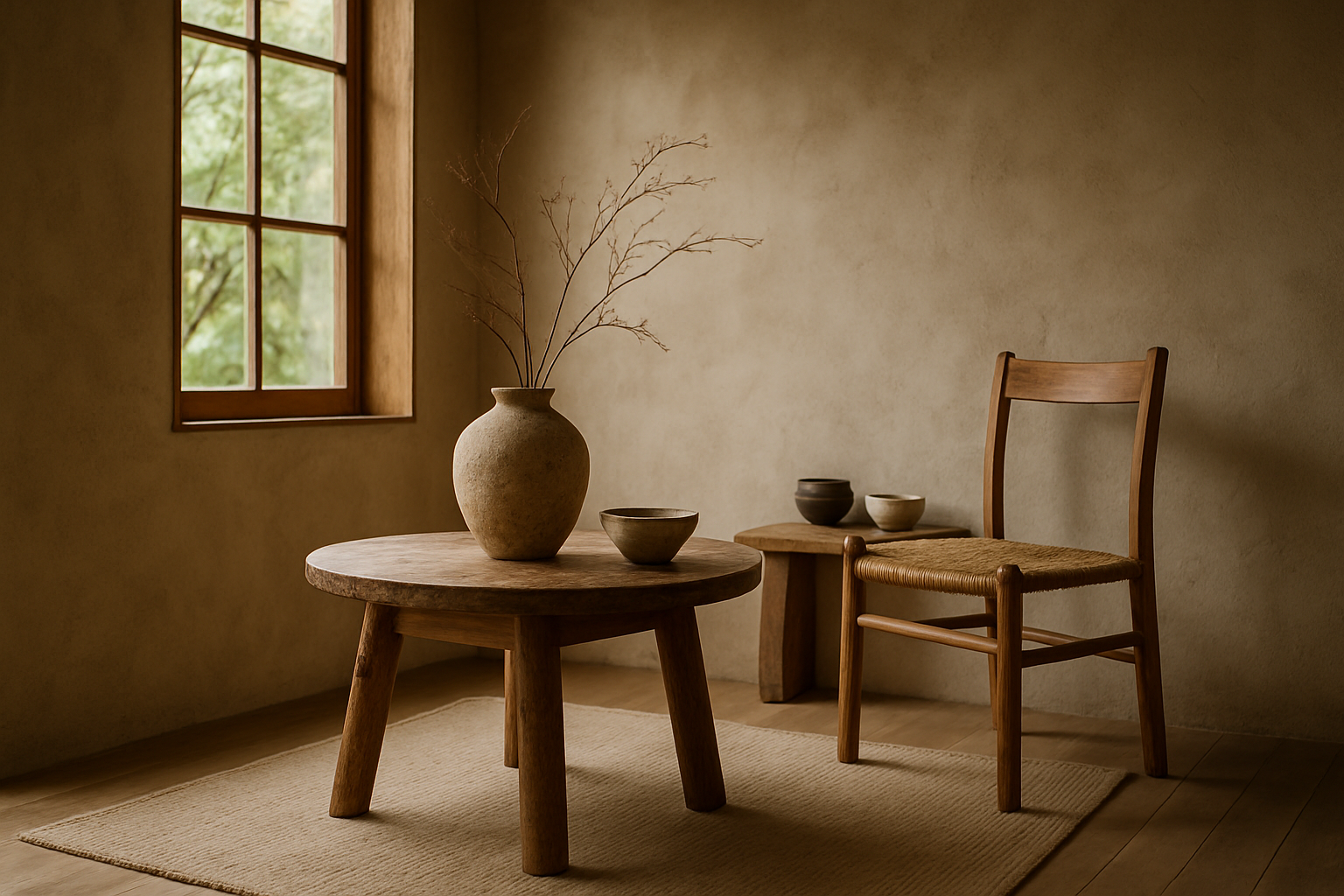The Whimsical World of Wabi-Sabi Decor
In a world that often celebrates perfection, a growing movement in home design is embracing the beauty of imperfection. Wabi-sabi, an ancient Japanese aesthetic philosophy, is making waves in contemporary interior design, offering a refreshing counterpoint to the sleek minimalism that has dominated recent trends. This article delves into the enchanting realm of wabi-sabi decor, exploring how this centuries-old concept is finding new life in modern homes and gardens.

Origins and Philosophy of Wabi-Sabi
Wabi-sabi has its roots in 16th century Japanese tea ceremonies, where the rustic simplicity of handmade tea bowls was prized over ornate, mass-produced alternatives. The term combines two concepts: wabi, which refers to simplicity and a detachment from worldly concerns, and sabi, which embraces the beauty that comes with age and wear. Together, they form a worldview that appreciates the transient and imperfect nature of all things.
In the context of interior design, wabi-sabi manifests as an aesthetic that values natural materials, organic forms, and objects that bear the marks of time and use. It’s a philosophy that stands in stark contrast to the disposable culture of fast fashion and trends, instead encouraging a deeper, more mindful relationship with our living spaces and possessions.
Incorporating Wabi-Sabi Elements in Home Design
Adopting a wabi-sabi approach to home decor doesn’t mean simply filling your space with old or broken items. Rather, it’s about curating a collection of objects and materials that tell a story, evoke emotion, and create a sense of peace and connection. Here are some key elements to consider:
Natural Materials: Opt for raw, unprocessed materials like wood, stone, and clay. Look for pieces that showcase the natural grain, texture, and imperfections of these materials. A rough-hewn wooden coffee table or a stone basin sink can serve as striking focal points.
Handcrafted Items: Embrace the uniqueness of handmade objects. Seek out ceramics, textiles, and furniture crafted by artisans. These pieces often bear subtle irregularities that add character and charm to your space.
Patina and Wear: Instead of discarding items that show signs of age, celebrate them. A well-worn leather armchair, a vintage rug with subtle fading, or copper vessels that have developed a beautiful verdigris all embody the wabi-sabi spirit.
Color Palette and Textures in Wabi-Sabi Design
The wabi-sabi color palette draws inspiration from nature, favoring muted, earthy tones over bold, artificial hues. Think of the soft greens of moss, the warm browns of aged wood, the subtle greys of stone, and the creamy whites of unbleached linen. These colors create a calming backdrop that allows the textures and forms of your decor to take center stage.
Texture plays a crucial role in wabi-sabi interiors. Rough, tactile surfaces are prized for their ability to engage the senses and evoke a connection to the natural world. Consider incorporating:
-
Nubby linens and raw silk textiles
-
Rough-plastered walls
-
Unglazed ceramics
-
Weathered wood surfaces
-
Stone or concrete floors with visible aggregate
The interplay of these textures creates a rich, sensory experience that invites touch and contemplation.
Wabi-Sabi in the Garden
The principles of wabi-sabi extend beautifully into outdoor spaces, offering a refreshing alternative to manicured, formal gardens. A wabi-sabi garden embraces the cycles of growth, decay, and rebirth, finding beauty in each stage. Here are some ways to bring this aesthetic to your outdoor space:
Embrace Asymmetry: Move away from perfectly symmetrical layouts and rigid geometric designs. Allow plants to grow in natural, organic forms and create meandering pathways that invite exploration.
Choose Native Plants: Select species that are well-adapted to your local climate. These plants will require less maintenance and will naturally harmonize with the surrounding environment.
Incorporate Aged Elements: Use reclaimed materials like weathered wood, rusted metal, or mossy stones in your hardscaping. These elements add character and a sense of history to your garden.
Celebrate Seasons: Rather than striving for year-round perfection, design your garden to showcase the beauty of each season, including the stark simplicity of winter.
The Mindful Approach to Acquiring and Arranging
Adopting a wabi-sabi approach to home and garden design often involves a shift in mindset when it comes to acquiring and arranging possessions. Instead of following trends or filling spaces for the sake of it, wabi-sabi encourages a more thoughtful, curated approach:
Quality Over Quantity: Invest in fewer, high-quality pieces that will age beautifully over time. This might mean saving up for a handcrafted dining table rather than opting for a mass-produced alternative.
Emotional Connection: Choose items that resonate with you on an emotional level, whether it’s a piece of art that moves you or a family heirloom with a rich history.
Negative Space: Embrace empty spaces as an integral part of your design. In wabi-sabi, these voids are not seen as areas to be filled, but as opportunities for rest and contemplation.
Mindful Arrangement: When placing objects, consider their relationship to each other and to the space around them. Aim for a sense of balance and harmony rather than perfect symmetry.
Wabi-Sabi in a Digital Age
In our hyper-connected, fast-paced world, the principles of wabi-sabi offer a much-needed antidote to the pressures of perfection and constant newness. By embracing this aesthetic in our homes and gardens, we create spaces that serve as sanctuaries—places where we can slow down, appreciate the beauty of imperfection, and connect with the natural rhythms of life.
As we look to the future of interior design and landscaping, the growing interest in wabi-sabi suggests a broader shift towards more sustainable, mindful living. By valuing objects that age gracefully and finding beauty in imperfection, we move away from a throwaway culture and towards a more meaningful relationship with our surroundings.
The wabi-sabi approach reminds us that our homes and gardens are not static showcases, but living, breathing spaces that evolve with us over time. In embracing this philosophy, we open ourselves to a deeper appreciation of the subtle, often overlooked beauty that surrounds us every day.





